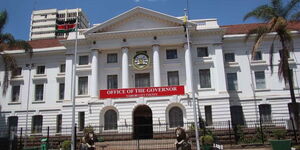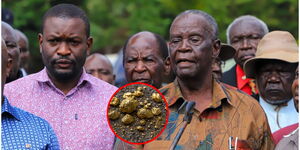Uhuru Gardens, situated in Lang'ata, Nairobi County, is one of the most iconic and commemorative parks in Kenya.
Spanning over 30 acres, it boasts numerous monuments and a diverse array of trees. Amongst this greenery, one tree, a Mugumo (fig) tree, holds a special place in Kenya's history.
According to the Nairobi Museum, this particular tree marks the precise spot where, on the night of December 12, 1963, Kenya celebrated its independence by hoisting its inaugural national flag.
This moment saw the lowering of the British flag, known as the Union Jack, as Kenya embarked on a journey towards self-governance.
In acknowledgement of its historical importance, the location where this tree stands was christened "Kenya's Birthplace."
Notably, it was President Jomo Kenyatta who personally planted this tree in June 1964 within the memorial garden.
"The tree is also known to live for many years, hence making it a good an ideal symbol to commemorate such an event. It is sacred to most communities, the Museum explains in a commemorative stone.
"It bears fruits even in the dry season when most other trees do not have them thus providing food to different species of wildlife such as birds, and monkeys" the Museum further states.
Meaning of Key Monuments
Apart from the fig tree, there are also other monuments that capture the struggle the MauMau went through as well as aspirations that Kenyans across different generations have harboured.
Man
One of the earliest sculptures to be erected in the garden, which earned the distinction of being declared a national monument in 1966, is the carving of a man standing before two spears and a shield.
The sculpture serves as a symbol of the courage and strength shown by the Kenyan heroes who fought for the nation's independence.
"It was officially granted on October 15, 1963. It features two lions holding spears and a traditional Maasai shield.
"The shield and spears symbolize unity and defence of our hard-earned freedom, while the lions signify courage. The shield features the colours of our national flag," the Museum explains.
Dove
At the centre of the main tall monument, lies a dove which sits atop two clasped hands.
The sculpture signifies the profound ideals of love, peace, and unity that feature prominently in the Kenyan national anthem.
Kenyan Flag
Opposite the sculpture of the man, stands another carving of four people lifting a pole bearing the Kenyan flag aloft.
The sculpture serves as a symbol of unity among Kenyans, mirroring the efforts of the liberation movement whose members worked tirelessly to raise the Kenyan flag towards independence.
Prism
In commemorating 25 years since the country's independence, lies another monument of three people depicted lifting a prism.
The monument underscores the theme of Kenyan unity, symbolising the collective spirit that has remained a cornerstone of the country's progress.












